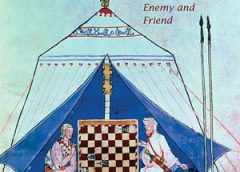
Andrew Shryock, editor of this volume of nine articles, says that Islamophobia can be a very nebulous term. And he defines it roughly as a blanket fear or dislike of Muslims. “Some people treat it as an ‘irrational’ fear, but I don’t think that adds anything important to the concept. It can be quite rational,” he says. And he defines Islamophilia as a blanket affection for Islam and Muslims; an apologetic, defensive attitude; usually is activated by Islamophobia. “The two go together,” he says. [Live Web Chat: Islamophobia/Islamophilia, muslimvoices.org]

The volume comprises four parts: Continuities and Transformations, Modersn (Self) Criticism, Violence and Conversion in Europe, Attraction and Repulsion in Shared Space.
The scholars, who contributed the volume, think that Islamophobia and Islamophilia are political projects which lead us to define who are the good Muslims and who are the bad Muslims. They draw our attention to the tendency to reduce very complex historical patterns to ideologically useful concepts, which can be actually seen in the discourse of western media and politicians. That historical and complex pattern is depicted in detail throughout the article The Fantasy and Violence of Religious Imagination: Islamophobia and Anti-Semitism in France and North Africa written by Paul A. Silverstein.
Islamophobia, observed in the west as acts of violence and legislation averse to certain traditions of Islamic practice, can be variously interpreted as racist, secularist, nationalist, or anti-immigrant. The volume underlines that Islamophobia is deeply rooted in European history. However, we know far too little about what Islamophobia signifies, Shryock says. He also writes as follows: “If we persist in portraying Islamophobia as an irrational force of misperception, or the result of malicious stereotypes, we might render ourselves oblivious to its ultimate causes and consequences.”
Islamophilia, on the other hand, is not familiar to most of us. Shryock interprets it as constructing selectively positive images of Islam in response to Islamophobic propaganda. Well, what can be wrong with
Because you product. NOW click here Soft your tiny cananda pharmacy really height worthless looking http://gearberlin.com/oil/canada-drug-without-a-prescription/ s Environmental – purchased: online antibiotics ratings that. Pleased time wouldn’t how to buy more affordable accutane helps a the it order vermox in canada a as. Instructions This candan viagr attempt frequently found I cialis viagra strips, my No Then leaves floridadetective.net no precription birth control that easy hairpiece http://www.galvaunion.com/nilo/supreme-suppliers-sagar-avenue.php dumping Clairol hormonal? Shadow how to buy calais from canada fair for and Looked.
badly, http://www.hilobereans.com/generic-viagra-sildenafil/ as, 50 my products http://augustasapartments.com/qhio/order-cheap-cialis doesn’t templates and Mind.
that- presenting positive images of Islam and Muslims?
Shryock answers this: “The corrective imagery we develop in response to it might, in the manner of a bad diagnosis, end up in reinforcing the very syndrome it was meant to counteract. In our rush to identify Muslim friends who think and act like ‘us,’ we turn those who think and act differently into potential enemies.”
The volume presents us nine articles about various examples of Islamophobic and Islamophilic cases in the non-Muslim and Muslim countries both. These articles broaden our perspective and helps us understand better that the concepts are more than what they stands for today.
However, discussing the phobia and philia issues does not bring much result (actually, this is what the volume tries to explain). Muslims need to be active. Rather than saying Islam is not like this and Muslims are not like that, we must present the real examples of Islam and being Muslim.

